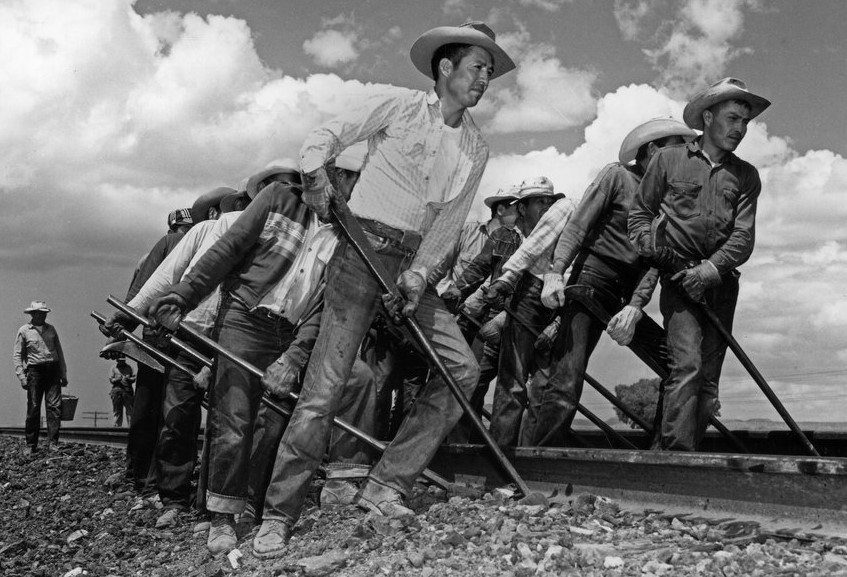Caption for photo above: Unidentified Diné section gang shifting rails into alignment near Gallup, New Mexico, on The Atchison, Topeka & Santa Fe Railway. This shot was taken by a corporate or contracted AT&SF photographer. Courtesy of the Kansas Historical Society.
When working in one locale for an extended period of time, Sam Platero and his fellow Santa Fe Railroad workers would build a sweat lodge out of whatever materials were available, ideally tree limbs and sticks, foliage and, if available, cedar bark to carpet the interior. Thick layers of soil were placed over the lodge. Then to regulate the heat and steam, blankets were placed over the vent holes.
If a river or stream was nearby, all the better, as water was needed to pour over the hot rocks, and for swimming between sweating and healing. The lodge door faced east, as did the hogan doors at home.
A fire would be built near the lodge, and the best rocks placed on the fire, then placed near a side wall inside the lodge, where the vents were located. The preferred stones were Lava or volcanic rocks, stones that would hold the heat.
Leo recounted his father and fellow Navajos, after some much dirty, strenuous work, and with whatever ill effects they encountered, would sweat all of this out. They were sweating and singing for healing and to return to harmony. In the lodge, striped and sweating, Sam and his fellow railroad workers sang Yei Bi Chei (Yébîchai) songs or curative chanting cycles which are both religious and medical observances. After the songs were sung, they left the lodge and dried themselves with dry soil, then they would walk to the river or stream and bury themselves in the water, only to return to the lodge, to sing and sweat again.
After coming back into their families or bands, travelers or warriors would not return to their families directly, not until a medicine man sang songs with them, and removed what ills they encountered while away.
As the railroad workers came from across the wide expanse of Navajo country, representing diverse bands and locations, Leo’s father Sam learned and then sang numerous variations of songs he knew, and he sang new songs, he had not heard before. Learning these new songs fascinated him.
Leo’s father, silversmith Sam Platero, worked on a section gang in the 1950’s for the Atchison, Topeka and Santa Fe Railway. Leo Platero both told this story and approved it use here.
Do you want to experience more regarding this history? Come and be a part of the “Railroads in Native America” Gathering, May 19-21, 2022 at the Ogden Union Station. Attendance is free, either in-person or by attending remotely; however, registration is requested, click here.

